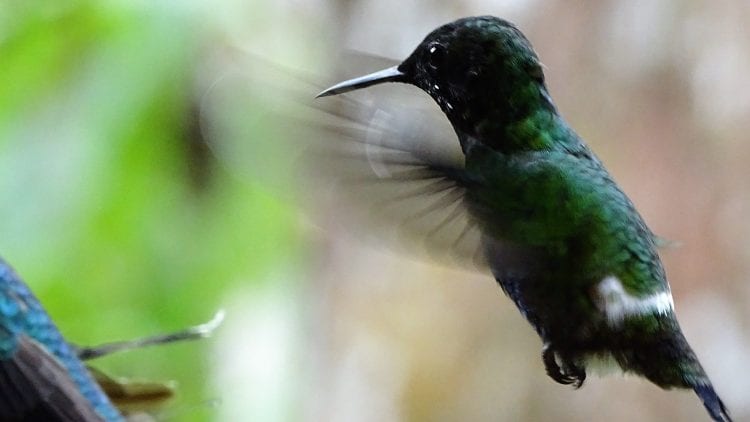In just a few hours from rainforest to coast
Ecuador: with landscapes that stretch from a warm coast with a dry desert climate through the volcanic highlands of the Andes to the tropical Amazon, you can ...

Due to the variety of climate zones, Ecuador is blessed with stunning and versatile flora and fauna. To put this in perspective, Ecuador has around 25,000 different species of plants and flowers, while North America has 17,000 species. Furthermore, around 1,600 species of birds have been observed, twice as many as in North America, Europe or Australia. It is even the fourth richest country in bird biodiversity worldwide and to date new species are still being discovered.
To the east of the Andes and in the northern coastal area you will find tropical rainforest. More than 300 different tree species grow on one hectare in these areas. Common tree species are palms and laurels and you will also find beautiful igapó forests and giant kapok trees in this region. You can hardly believe your eyes when seeing our “domesticated plants” like the orchid and bromeliad in the wild, blooming richer and much larger.
In the eastern rainforest you will wake up to the exceptional sound of howler monkeys. They are accompanied by peers such as the spider monkey, wool monkey, capuchin and silk monkeys. An unprecedented number of animal species live here. Well-known mammals are the jaguar, sloth, the armadillo and the rare pink freshwater dolphin. Hummingbirds and toucans, among others, fly through the forest. Marvel at the countless butterflies, around 4,500 species have been counted! The bright blue morpho is undoubtedly the most beautiful, with a wingspan of up to 18 cm.
Between 1,000 and 3,500 meters you can walk through the cloud forests on the slopes of the Andes. The very high humidity ensures lush vegetation, covered with moss and tree ferns. The very rare spectacled bear is found here. You are surrounded by birds in colours that seem impossible such as hummingbirds (around 120 species, the highest number of hummingbird species in the world) and tangaras (around 133 species).
Above 3,500 meters you will discover the infinite vastness of the páramo and the savannah. In the far corners of the mountains you wander through pine forests as if you were in a fairy tale. In this magical landscape between the tree and snow line you will find spectacular bromeliads, gentians and the national pride, a flower called chuquiragua.
Wildlife here is less varied. The páramos are mainly used by the Indians to graze cattle. The alpaca and the lama are used as beasts of burden and for meat and wool. Ecuador’s delicacy, the Guinean piglet, lives here in the wild. You can recognize it on the menus under the name “cuy”. A bird that you absolutely want to spot in these regions is the world’s largest bird: the magical Andean condor. With a wingspan of up to 3 meters this bird can reach a height of 6.000 meters The Incas saw the condor as the most sacred bird and believed that it was the messenger of their gods.
On the coast you will find mangrove forests where many species of sea birds live, such as spoonbills, cormorants, frigate birds, and brown pelicans. Just off the coast, you can also visit Isla de la Plata, known as “Little Galapagos”. The most beautiful experience in nature is spotting the giant humpback whales. From the end of June to the beginning of October, hundreds of whales migrate from the icy waters around Antarctica to the coast of Ecuador to breed there.
Feel inspired by all the beauty that Ecuador has to offer? Contact us and we will be happy to create the perfect journey for you!